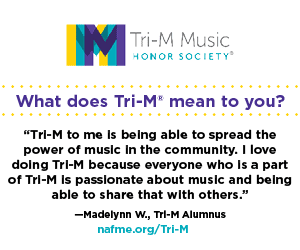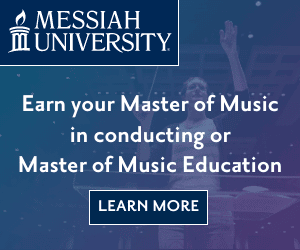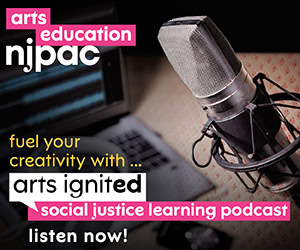/ News Posts / Ensuring Legitimacy and Viability in Music Industry Education
The Viability and Legitimacy of Current Music Curricula
By NAfME members José Valentino Ruiz, Ph.D., University of Florida, and Thaddaeus Bourne
Traditionally, music education has tended to neglect the practical aspects of career management, entrepreneurial skills, and technological integration across disciplines. However, in the last decade, this conventional curriculum has come under increasing scrutiny as more graduates find themselves poorly prepared for the diverse careers demanded by today’s economy. In light of this, professors and administrators must consider both “legitimacy” and “viability” when evaluating and recruiting for their programs.
In the context of higher music education, the legitimacy of a curriculum is determined by its ability to deliver educational content effectively, supported by adequate personnel, resources, and infrastructure. This encompasses the suitability and pristine quality of faculty, the availability of up-to-date facilities, and access to resources that adequately reflect the realities of the music industry. Legitimacy fundamentally concerns the structural and educational soundness of a program, ensuring that it can credibly replicate real-world scenarios and offer a comprehensive educational experience. For example, a legitimate music business program would employ faculty who are not only academically qualified but also actively engaged in the music industry. Their influence should extend beyond academic circles to hold real sway within the industry itself. This direct industry connection enriches the curriculum with contemporary practices and insights, thereby enhancing its educational value. Moreover, such programs should be equipped with the most contemporary technologies relevant in current music production and management sectors, and offer experiential learning opportunities such as internships, collaborative projects with industry professionals, and live performance workshops. These experiences help provide students with hands-on practice that closely mimics real-world operations.
Viability, on the other hand, refers to the relevance and demand of the discipline in the contemporary market. It addresses whether students who pursue this education will have substantial prospects for employment or entrepreneurial opportunities upon graduation. A viable music business curriculum, for instance, is one that not only teaches students how to create and perform music but also how to monetize their skills, navigate the complexities of the music industry, and adapt to its continual changes. This aspect of viability emphasizes economic sustainability driven by market demand, ensuring that the education provided leads to gainful employment and career longevity. A viable curriculum thus responds to the industry’s current needs, such as digital marketing skills for musicians, business management, intellectual property law, and the use of emerging technologies like AI for multimodalizing business operations. The viability of such programs is often measured by the success of their graduates in securing employment, launching their ventures, and adapting to various roles within the music ecosystem.
Balancing Legitimacy and Viability
The challenge for music education institutions lies in balancing the legitimacy and viability of their curricula. While a program might be legitimate in terms of infrastructure and delivery, it may not necessarily be viable if it fails to align with ongoing industry trends and job market needs. Conversely, a program might focus heavily on current market trends viability but lack the depth of legitimate academic content and infrastructure to adequately prepare students for the complexities of the field. For example, an institution might invest heavily in state-of-the-art recording equipment (legitimacy) but fail to offer sufficient training in music streaming analytics or online branding, which are critical skills in the digital age (viability). Similarly, a program might focus extensively on classical music performance without incorporating elements of music technology or business acumen, thereby limiting the employment prospects of its graduates in a digitally-driven market.
Both the legitimacy and viability of music education curricula are crucial for preparing graduates who are competent, creative, and capable of thriving in the dynamic music industry. Educational institutions must continuously evaluate and adapt their programs to ensure they not only meet the academic and structural standards expected of higher education but also reflect the evolving landscape of the music industry, thereby enhancing the employment prospects of their graduates. This dual focus will equip students not just to survive but to thrive in the competitive and ever-changing world of music.
Challenges in Viability and Legitimacy of Higher Music Education Curricula
Higher education, particularly within specialized fields like music, faces significant challenges in maintaining the viability and legitimacy of its curricular offerings. These challenges stem not only from the fast-paced evolution of the industry but also from internal factors within educational institutions themselves.
Administrative and Faculty Challenges
On an administrative level, colleges and universities often grapple with budget constraints, bureaucratic inertia, and the complexities of aligning academic goals with industry standards. Funding is a pivotal concern, as cutting-edge music technology and industry-standard resources are expensive. Additionally, administrative processes can be slow to respond to the rapid changes in the music industry, making curricular updates cumbersome and delayed. Faculty workload is another critical issue impacting the refreshment of curricula. As academic staff are increasingly burdened with teaching loads, service commitments, and the expectation to contribute to scholarly research, their capacity to innovate within the curriculum is significantly reduced. This heavy workload can hinder faculty from staying abreast of industry trends and technologies, thus impacting their ability to integrate these elements into their teaching effectively.
Stagnation and Loss of Relevance
Curricula can become stagnant when they fail to evolve at the pace of the industry they aim to serve. In music education, what was relevant even five years ago can quickly become outdated due to technological advancements and shifts in consumer behavior and market dynamics. This stagnation is often exacerbated by the lengthy approval processes required for curricular changes in many higher education institutions, where new courses or updates may take years to implement. Furthermore, the traditional tenure and promotion systems in academia do not always recognize or reward innovation in teaching practices. This lack of incentive can lead to a conservative approach to curriculum design, where faculty may be reluctant to introduce new methods or content that deviates from established academic norms.
Impact of Rapid Industry Evolution
The music industry, in particular, has seen a seismic shift in how content is created, distributed, and monetized, moving from a focus on physical media to digital platforms and now to direct fan engagement and virtual experiences. These changes demand a curriculum that is equally agile and forward-thinking. The traditional cycle of academic updates, which previously might have aligned with broader generational shifts every few decades, is now inadequate in the face of an industry that evolves biennially or even annually.
Strategies for Ensuring Legitimacy and Viability in Music Education Curricula
In an environment where both the pace of industry change and the expectations of educational outcomes are intensifying, music education institutions must adopt proactive strategies to ensure the viability and legitimacy of their programs. Here are several actionable recommendations for faculty and administrators to effectively manage and innovate curricular offerings:
- Implementing Adaptive Curricular Frameworks
Adaptive curricular frameworks are essential for rapid incorporation of new technologies and methodologies relevant to the music industry. Institutions should aim to:
- Develop a core curriculum that includes flexible modules that can be updated or replaced without needing a complete curricular overhaul.
- Establish a curricular review board specifically focused on tracking industry trends and technological advancements, ensuring that updates can be made swiftly and effectively.
- Establishing Benchmarks and Key Performance Indicators (KPIs)
To measure the success and relevancy of programs, institutions should define clear benchmarks and KPIs:
- Graduate Employment Rates: Track the percentage of graduates who gain industry employment within six months of graduation as a measure of program viability.
- Alumni Success: Monitor the career progression of alumni as a longer-term indicator of the program’s effectiveness.
- Industry Feedback: Regularly survey industry partners and alumni for feedback on the relevancy of the curriculum to current market demands.
- Innovation in Curriculum: Evaluate the frequency and impact of curricular updates and innovations.
- Strengthening Faculty Development and Incentives
To encourage faculty to stay current with industry practices and pedagogical strategies, institutions should:
- Offer regular professional development workshops and courses focused on new technologies and industry dynamics.
- Adjust promotion and tenure criteria to recognize and reward innovative teaching practices and curriculum development.
- Foster a culture of continuous learning and adaptation among faculty and staff.
- Leveraging Industry Partnerships
Strong partnerships with industry leaders can provide a real-time feedback loop and practical experiences:
- Create advisory panels consisting of industry practitioners to consult on curriculum updates and employment trends.
- Facilitate internships, co-op programs, and live project collaborations with industry partners to enhance practical learning experiences for students.
- Utilizing Data-Driven Decision Making
Incorporating data analytics into strategic decision-making processes can significantly enhance the effectiveness of curriculum planning:
- Analyze student performance data to identify strengths and weaknesses in the curriculum.
- Use market and trend analysis tools to predict future industry directions, integrating these insights into curricular updates.
- Enhancing Recruitment and Strengthening Donor Relationships
Effective marketing of a dynamic, industry-relevant curriculum can attract prospective students and appease donors:
- Publicize successful alumni stories and industry collaborations prominently in marketing materials.
- Demonstrate a commitment to innovation and industry relevance in donor communications to enhance funding opportunities for new initiatives.
- Encouraging Long-Term Sustainability
To ensure long-term sustainability, institutions should:
- Plan for regular investments in cutting-edge faculty, technology, and facilities.
- Develop endowment funds specifically earmarked for curriculum innovation and faculty development.
Contextualizing Legitimacy and Viability of Music Education Curricula
To effectively contextualize and operationalize the concepts of legitimacy and viability within music education, institutions must deeply understand and integrate the specific cultural, demographic, and economic realities of the communities they serve. This ensures that curricula are not only academically rigorous but also culturally resonant and economically relevant, thereby enhancing the employment prospects and artistic development of their graduates.
Here are expanded examples illustrating how this can be achieved:
- Regional Music Styles and Heritage: In areas with rich musical heritages, such as Nashville, Tennessee, known for its country music, or New Orleans, Louisiana, famous for jazz, music curricula should incorporate these genres deeply into their programs. This could involve courses in country music songwriting in Nashville or jazz performance in New Orleans. Collaborations with local musicians and venues, as part of the curriculum, can provide students with authentic learning experiences that reinforce the regional cultural identity while enhancing their employability within the local music scene.
- Demographic Considerations: Different demographics may have varying musical preferences and career aspirations. For example, a music program in a city with a high concentration of young adults might focus more on contemporary music styles such as hip-hop, electronic dance music, and pop, and include studies in digital music production and social media marketing. Conversely, a program in an area with an older demographic might emphasize classical music, opera, or jazz, aligning more with community-supported performing arts.
- Economic Opportunities: The viability of a music curriculum is also closely tied to the economic landscape. In regions where there is a booming entertainment industry, such as Los Angeles or Atlanta, curricula should include music business management, audio engineering, and film scoring, reflecting the job opportunities available. Courses on music licensing, contract negotiation, and entrepreneurship would be vital, preparing students to engage with the industry effectively.
- Emerging Trends and Technologies: Adapting to the rapid evolution of music technology is crucial. For instance, institutions located in tech hubs like Silicon Valley might integrate music technology programs that focus on software development for music applications, virtual reality concert experiences, and AI in music creation. This alignment ensures that the program remains on the cutting edge of technological advancements and meets the future needs of the music industry.
- Community Engagement and Projects: Projects that involve community engagement can also enhance the legitimacy and viability of music education programs. For example, students could participate in community music therapy sessions, organize local music festivals, or collaborate with local schools to enhance music education at the K-12 level. These activities not only provide practical experience but also build strong community connections that can support students’ careers post-graduation.
Tailoring their offerings to reflect diverse considerations enables music education programs to provide a relevant, effective, and comprehensive education. This preparation equips students for successful careers in a culturally diverse and economically variable environment. Such an approach enhances the immediate employability of graduates and ensures the long-term sustainability of the music education institution within its specific cultural and economic context.
Conclusion
In summary, the evolution of the music industry demands a reevaluation of current music curricula in higher education to ensure both legitimacy and viability. Music education has historically underemphasized crucial practical aspects such as career management, entrepreneurial skills, and technological adeptness, which are increasingly vital in today’s digital and diverse economy. To address this gap, it is essential for programs to integrate real-world scenarios into their curricula, thereby enhancing their relevance and applicability. This involves not only updating the technological infrastructure and teaching methodologies but also ensuring that the curriculum remains aligned with industry demands. By fostering a curriculum that is both academically sound and aligned with market needs, music education institutions can better prepare graduates for successful and adaptive careers in the music industry. This balance between legitimacy and viability is crucial for developing curricula that not only meet educational standards but also empower students to thrive in a rapidly changing professional landscape.
About the authors:
 NAfME member Dr. José Valentino Ruiz, the 2023 and 2024 International Academy of Digital Arts and Sciences Anthem® Award Winner for Best Strategy in Education, Art, and Culture, is a passionate scholar with over 80 published articles. He serves as the Editor-in-Chief of the International Journal of Music Entrepreneurship and Leadership and is the Founder and Program Director of Music Business & Entrepreneurship at the University of Florida. Previously, he was a Co-Editor at Artivate: A Journal of Entrepreneurship in the Arts. Dr. Ruiz is also a celebrated performer, recording engineer, producer, and composer, with four Latin GRAMMY® Awards (including Best Contemporary Classical Composition and Best Latin Children’s Album) and three nominations (including Best Latin Jazz Album). Additionally, he has received numerous accolades in business, film, marketing, and entrepreneurship, such as Inc. Magazine’s Best in Business® Award in Video, an EMMY® Award for Best Cultural Documentary, and the Association of Marketing and Communication Professionals Platinum® Award for Music Video and Televised Broadcast, among others. Dr. Ruiz also leads JV Music Enterprises, a multi-award-winning production company recognized by major publications including The New York Times, Rolling Stone, Billboard Magazine, and The Economist. For more information or to collaborate with Dr. Ruiz, visit www.josevalentino.com.
NAfME member Dr. José Valentino Ruiz, the 2023 and 2024 International Academy of Digital Arts and Sciences Anthem® Award Winner for Best Strategy in Education, Art, and Culture, is a passionate scholar with over 80 published articles. He serves as the Editor-in-Chief of the International Journal of Music Entrepreneurship and Leadership and is the Founder and Program Director of Music Business & Entrepreneurship at the University of Florida. Previously, he was a Co-Editor at Artivate: A Journal of Entrepreneurship in the Arts. Dr. Ruiz is also a celebrated performer, recording engineer, producer, and composer, with four Latin GRAMMY® Awards (including Best Contemporary Classical Composition and Best Latin Children’s Album) and three nominations (including Best Latin Jazz Album). Additionally, he has received numerous accolades in business, film, marketing, and entrepreneurship, such as Inc. Magazine’s Best in Business® Award in Video, an EMMY® Award for Best Cultural Documentary, and the Association of Marketing and Communication Professionals Platinum® Award for Music Video and Televised Broadcast, among others. Dr. Ruiz also leads JV Music Enterprises, a multi-award-winning production company recognized by major publications including The New York Times, Rolling Stone, Billboard Magazine, and The Economist. For more information or to collaborate with Dr. Ruiz, visit www.josevalentino.com.
 NAfME member Dr. Thaddaeus Bourne, D.M.A., is a multi-award-winning vocalist, strategist, and producer celebrated for his versatile artistry. He received the 2022 Latin GRAMMY® Award for Best Latin Children’s Album and the 2024 International Academy of Digital Arts and Sciences’ Anthem® Award for Best Strategy in Education, Art, and Culture for his documentary “Getting to the GRAMMY®s and Beyond: Music Entrepreneurship Curricula Meets the Red Carpet.” Additionally, he has earned several Global Music® Awards for his prowess as a Bel Canto singer who skillfully blends jazz, Latin music, and pop. His scholarly contributions include the recent publication, “Advocating for Intrapreneurship in Arts Entrepreneurship Education: Developing a New Generation of Innovative Professionals.”
NAfME member Dr. Thaddaeus Bourne, D.M.A., is a multi-award-winning vocalist, strategist, and producer celebrated for his versatile artistry. He received the 2022 Latin GRAMMY® Award for Best Latin Children’s Album and the 2024 International Academy of Digital Arts and Sciences’ Anthem® Award for Best Strategy in Education, Art, and Culture for his documentary “Getting to the GRAMMY®s and Beyond: Music Entrepreneurship Curricula Meets the Red Carpet.” Additionally, he has earned several Global Music® Awards for his prowess as a Bel Canto singer who skillfully blends jazz, Latin music, and pop. His scholarly contributions include the recent publication, “Advocating for Intrapreneurship in Arts Entrepreneurship Education: Developing a New Generation of Innovative Professionals.”
Did this blog spur new ideas for your music program? Share them on Amplify! Interested in reprinting this article? Please review the reprint guidelines.
The National Association for Music Education (NAfME) provides a number of forums for the sharing of information and opinion, including blogs and postings on our website, articles and columns in our magazines and journals, and postings to our Amplify member portal. Unless specifically noted, the views expressed in these media do not necessarily represent the policy or views of the Association, its officers, or its employees.
Published Date
April 30, 2024
Category
- Careers
- Technology
Copyright
April 30, 2024. © National Association for Music Education (NAfME.org)







